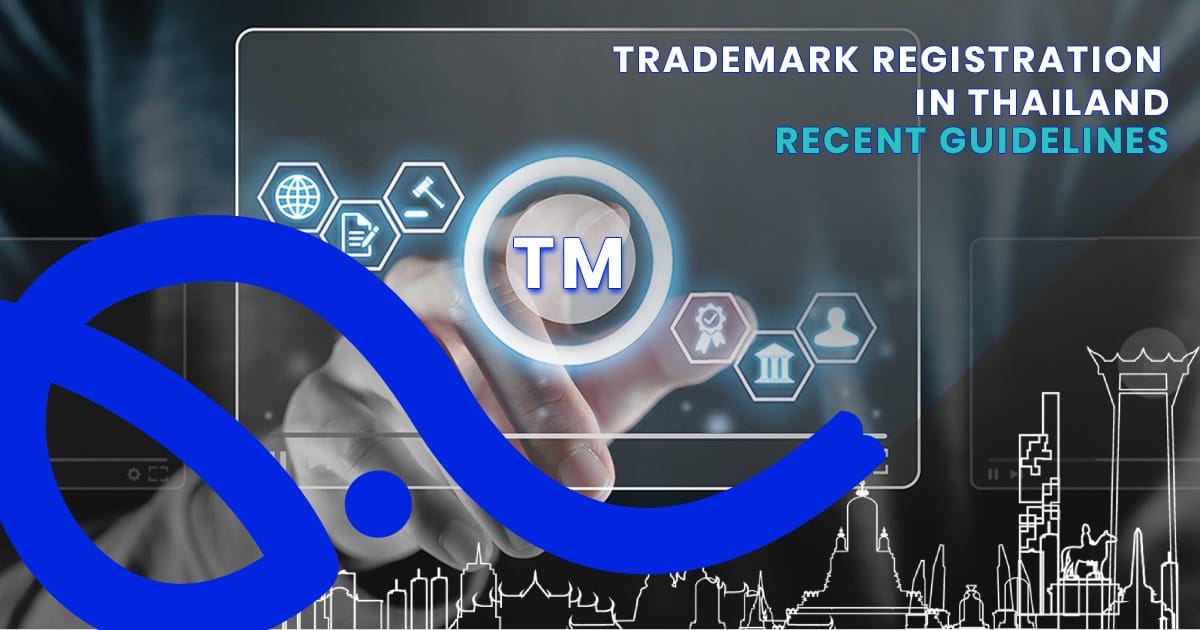Trademarks are the most important assets of a company as they symbolize brand identification. Additionally, they aid in differentiating a company from its competitors. In Thailand, an applicant has to register a trademark with the Department of Intellectual Property (DIP) to receive trademark protection. Thailand follows the “first-to-file” principle, which states that the earlier the filing of a trademark registration application, the better. With the surge to the increase of sources of intellectual property and concepts, trademark rules always need an update. From this perspective, there are a few changes in the guidelines for Trademark Registration in Thailand in 2022.
Trademark Registration Guidelines 2022
New Definition of “Distinctiveness”
Updates in “Prohibitive Characteristics”
New Requirement of “Identicalness/Confusing Similarity”
Here You Get the Updated Help!
Overview: New Trademark Registration Guidelines 2022
In accordance with Section 6 of the Trademark Act B.E. 2534 (1991) (amendment in 2000 and 2016) (the “Trademark Act”), a trademark must satisfy three criteria for successful registration:
- It must be distinctive,
- Not be prohibited by the Trademark Act, and,
- Not be the same as or confusingly similar to another person’s trademark that has already been filed or registered.
The Trademark Registration Handbook B.E.2565 (2022) is a revised edition of the Trademark Registrar Handbook B.E.2559 (2016). By this, DIP presents clear, uniform, and current guidelines on methods and practices for trademark registration in Thailand.
The Handbook offers a detailed explanation of the substantive conditions for a registrable trademark as specified in Section 6. Additionally, it contains an outline of the registration procedures that the registrar has to follow. The modification also includes the publication and opposition of trademark applications. The handbook also includes the inspection of service marks, collective marks, certification marks, and formality requirements. All information is according to Sections 9, 10, and 11.
Overall, it appears that the Handbook gives more user-friendly and thorough recommendations as compared to the previous edition. It is because it provides a thorough description of both the regulations and practices. Additionally, it describes relevance to the inspection of trademark applications.
Requirement of “Distinctiveness”
Distinctiveness is one of the essential criteria for a registrable trademark. The Handbook describes the characteristics listed in Section 7 Paragraph 2 that make a trademark distinctive. It appears that the likelihood of trademark registration increases if it is whimsical, arbitrary, or provocative. Additionally, Paragraph 3 of Section 7 mentions the requirement to acquire uniqueness via use. Thereby, it is mandatory to produce proof of the use of such a trademark (e.g. receipts of sales, marketing, and advertisement).
- The revised TM Guideline includes five distinctness spectrums:
(i) fanciful/inventive markings;
(ii) arbitrary marks;
(iii) suggestive marks;
(iv) descriptive marks; and
(v) generic marks.
- Now it is possible to classify combinations of three or more uncommon sequential alphabets and digits, such as TCL and HTC, in the first spectrum of fundamentally distinctive/inventive markings.
- As long as the mark lacks a definition, markings made out of a combination of the Japanese, Chinese, or Korean alphabets can now be considered fundamentally distinctive or inventive marks.
- The minimum amount of time to use evidence to establish acquired uniqueness in Thailand is now two years. According to the new TM Guideline, advertisements on television, social media sites, billboards, and other print media are sufficient as proof of use in Thailand.
- The “Disclaimer Instruction” to a non-distinctive component of the mark is only relevant to the non-dominant component of the marks, according to the revised TM Guideline.
Requirement of “Prohibitive Characteristics”
- Unless the application presents an authentic official consent letter issued by the embassy and/or ministry of trade (or their equivalent) to indicate that the applicant is permitted to use such names/abbreviations, country names, and abbreviations cannot be registered.
- Country names and abbreviations may be used in the mark as long as the applicant is of that nation’s nationality. “Made in [country name/abbreviation],” for instance.
- Now, it is possible to evaluate the applicants’ intent when determining whether the mark violates public order, morals, or policy.
- According to the revised TM Guideline, where a mark has been recognized as a “well-known” mark, trademark examiners should take those determinations into account.
Requirement of Identicalness/Confusing Similarity
A trademark can be substantially similar to a filed or registered trademark, or it cannot be identical to that trademark. This is another criterion according to Section 13 of the Act. Similarities in phonetics, meaning, class, the nature of the goods/services, sale channels, and the target audience are the other considerations. It appears that the registrar will allow for more latitude in the evaluation of trademark applications, enhancing the likelihood of trademark registration. A good illustration is when two markings are similar to one another but have different pronunciations.
- The new TM Guideline outlines the evaluation of confusing similarity in detail and instructs trademark examiners to take into account elements like consumer groups, whether the goods or services require expert advice or supervision, the purpose of use, trade or distribution channels, and the cost of the goods or services.
Contact Us for the Updated Help!
Thailand’s Department of Intellectual Property discloses the Trademark Examination Guideline (“TM Guideline”) on January 17, 2022. It is applicable to all current and future trademark applications. The revised TM Guideline clarifies numerous significant concerns, particularly those essential to registrability.
We are the source of updated help for your Trademark registration in Thailand. If you are not from Thailand, you will surely need our help because of the following reasons:
- Complete and absolute support in Trademark Registration in Thailand
- Trademark will not be possible without the Notarization of documents
- You will need Document Translation Support throughout the process
- We have the Government Authorized Attorneys to carry on your Trademark Registration Process
- Our English-speaking communication specialists will make the connection between us smoother
To know more about us and inform us about your requirements in detail, email us at officer@konradlegal.com.



